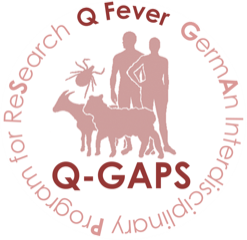Q Fever was agreed on the list of 10 prioritised pathogens by EFSA:
Prioritisation of zoonotic diseases for coordinated surveillance systems under the One Health approach for cross‐border pathogens that threaten the Union
In the context of the initiative ‘CP‐g‐22‐04.01 Direct grants to Member States’ authorities', EFSA was requested to develop and conduct a prioritisation of zoonotic diseases, in collaboration with Member States, to identify priorities for the establishment of a coordinated surveillance system under the One Health approach.
The methodology developed by EFSA's Working Group on One Health surveillance was based on a combination of multi‐criteria decision analysis and the Delphi method. It comprised the establishment of a list of zoonotic diseases, definition of pathogen‐ and surveillance‐related criteria, weighing of those criteria, scoring of zoonotic diseases by Member States, calculation of summary scores, and ranking of the list of zoonotic diseases according to those scores. Results were presented at EU and country level.
A prioritisation workshop was organised with the One Health subgroup of EFSA's Scientific Network for Risk Assessment in Animal Health and Welfare in November 2022 to discuss and agree on a final list of priorities for which specific surveillance strategies would be developed. Those 10 priorities were Crimean‐Congo haemorrhagic fever, echinococcosis (both E. granulosus and E. multilocularis), hepatitis E, influenza (avian), influenza (swine), Lyme borreliosis, Q‐fever, Rift Valley fever, tick‐borne encephalitis and West Nile fever. ‘Disease X' was not assessed in the same way as other zoonotic diseases on the list, but it was added to the final list of priorities due to its relevance and importance in the One Health context.
© European Food Safety Authority
Source: EFSA Journal 2023;21(3)


